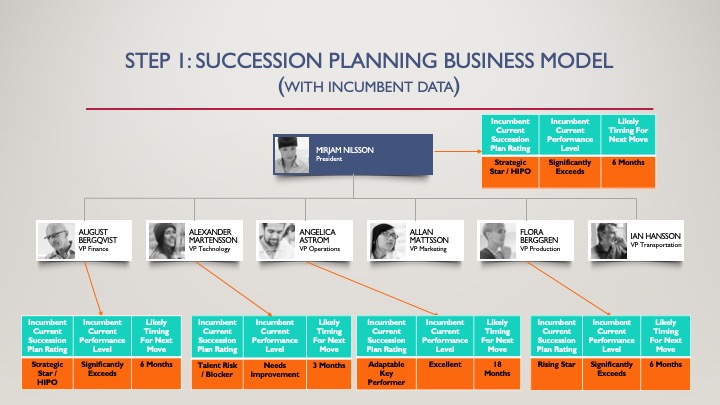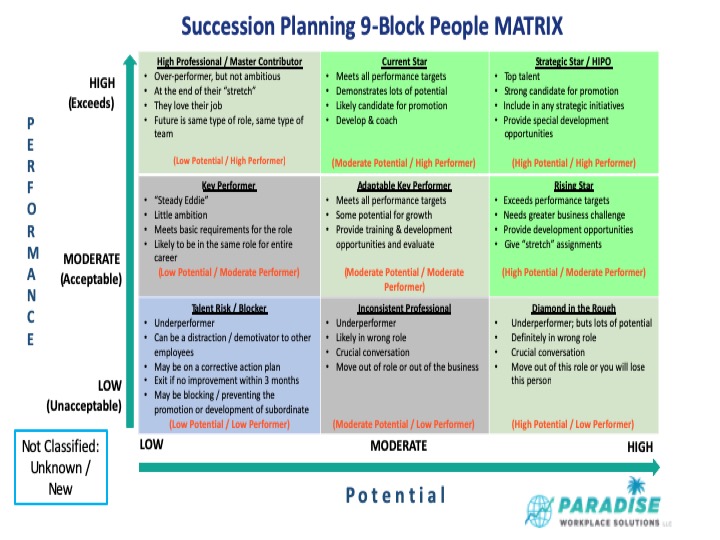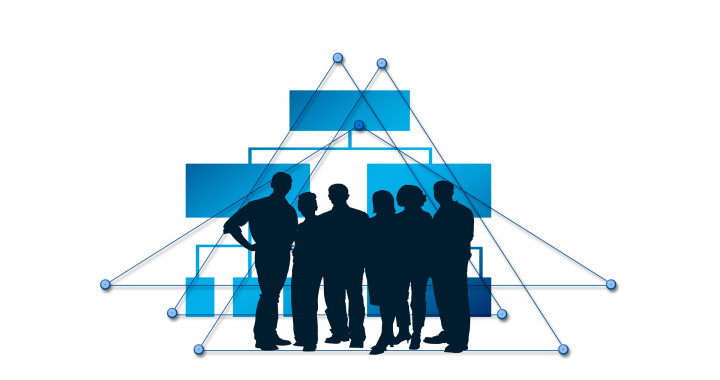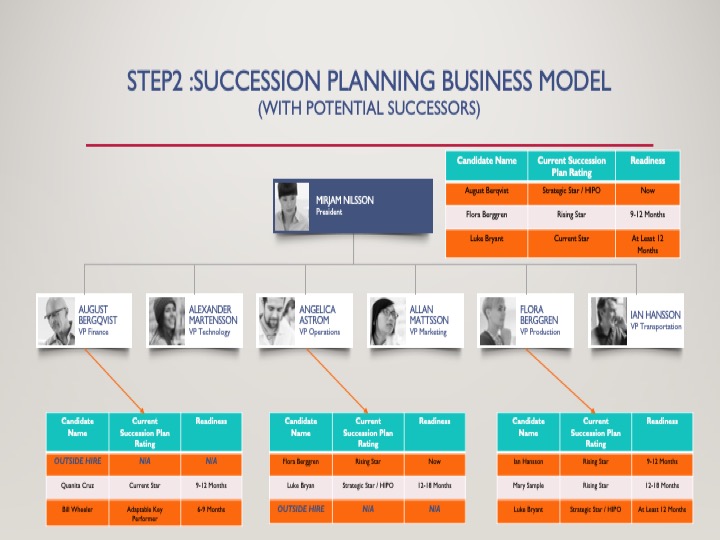News
Take Care: Now’s The Time For A CMD (Crisis Management Dozen) Plan
I don’t know of a single event in my lifetime that has had the world gripped in fear and was not as a result of the actions of one country or person.
Countries, businesses, and families have been affected.
Some people will wallow in the constant changing events or numbers of lives lost.
Some people will heed advice of doomsayer’s and continue to stock up unnecessarily on toilet paper.
Some people will sit back and see what happens.
What about you? The business owner? The solopreneur? You are not helpless in this situation!
I have long professed the use of the “CMD” Plan; also known as the Crisis Management Dozen Plan. I have modified it slightly based on current events.
Let me explain……
It is all centered around “Taking Care”. Taking care of what’s most important:
1. Care of Yourself and Your Family
2. Care of Your Business
3. Care of Your People
Each of these, has 4 components that each of us could, and should, focus on during any time of crisis.
1. Care of Yourself and Family
Very easily put, you are no use to yourself or anyone else unless you start by focusing on yourself. You do this by starting with 4 very simple, yet important steps:
A. Assure your safety and that of your family. Make sure that you and your family are healthy and safe and take the necessary precautions to assure that this continues. Keep yourself and family insulated (I prefer to use this word rather than isolate) from harm by assuring you have a safe place to call “home”. This includes assuring you have the necessary amount of food, supplies, medication, etc. to make it through the period of time that you may need to be sheltered and “insulated”.
B. Make prudent financial decisions. During times of crisis, financial instability abounds. It may not be the right time to buy that new car or book a vacation. Your source of income could be jeopardized and may need to put your “rainy-day fund” in play.
C. Keep calm and poised. You cannot change the actions or behaviors of others; you can only control your own. If you have a family, you may be setting the tone for others’ actions. Be mindful of what you do and say.
D. Keep growing. If you need to work remotely, or you happen to have a reduced workload or even lose your job. Never stop learning and growing. Use technology to your advantage. There are many FREE websites and sources for education and training. LinkedIn offers free training and development courses. Use this time to positively focus your energies on activities that move you forward.
2. Care of Your Business:
Once you have assured the safety and health of you and your family, you can turn your attention to that of your business.
A. Business Continuity. All businesses should have a business continuity plan. What happens if you experienced a blizzard? A hurricane? An earthquake? A system-wide computer virus? Will you continue to operate? If so, how and where? When world events like we are experiencing now, when we are being asked to assure social distancing, working in a normal business center may not be acceptable, but you need to continue operating your business. How do you do it? You can start now if you don’t already have a plan.
B. Current Financial Review. Current world events of business environment conditions may warrant an in-depth look at your short-term financial stability. Has your business suffered revenue loss? Can you make payroll this month? Will you need to cut expenses and/or staff? If so, when and how much?
C. Business Plan Review. When is the last time you looked at your business plan? I’m not talking about your annual plan or a review of your P&L statement, I’m talking about your strategic plan. If during times of crisis, your business is slowed, take the opportunity to brush the cobwebs off your (strategic) business plan. Are you where you wanted to be (under normal business conditions)? Do you need to adjust your plan or consider alternative strategies? Now is the time.
D. People Strategy Review. Those that know me know I preach about the need for a people strategy. Now is the time to review that strategy as well. Start with a review of your succession plan. Depending upon the severity of the world events, and the possible turnover of employees, you need to assure you have the right people, in the right jobs, at the right time, for the right reasons.
3. Care of Your People:
Once you have looked at the business, you need to look at your people; the heartbeat of your business.
A. Assure the Safety of Your Employees. If your business has employees that are in a brick and mortar facility, you need to assure the safety of your employees, customers and visitors under any circumstances. Under current events, if your business is still operating and not shut down, this means you need to assure that you take the necessary precautions of social distancing, extraordinary cleanliness procedures and perhaps even providing masks and/or hand sanitizers.
B. Use Virtual Offices or Work from Home Provisions. Whether your business has a formal telecommuting or work from home policy or not, you should consider the implementation of such programs to minimize the potential for spreading of any contagious conditions.
C. Support the Needs of Your Employees and Their Families. Employees with school-age children may be faced with the reality that they need to be home with their children as a result of school closures. The employee themself, or their family member, may be sick or contagious. Support, where possible the work from home provision. If the employee is a production worker or someone that needs to be in the workplace, perhaps there are on-line training courses that this individual can benefit from while completing from home.
D. Communicate. Communicate. Communicate. In times of chaos, people (employees) are begging for information. Over the past week or so, I have received no less than 3 dozen emails from CEO’s of banks, financial institutions, public services, etc. explaining what they are doing to assure the safety of their customers, their employees and of their families. While they may all have similar messages, they all felt the need and importance for communicating to their customers. As a business owner, you need to assure ongoing communication with employees; whether you are open or closed! Ongoing communications to keep your employees abreast of the business, as well as to reinforce calm and a showing of support for all your employees is not optional, but mandatory during these unsettling times.
As I indicated earlier, I have modified the CMD Plan based upon current events. However, the basis for the CMD Plan are important and critical during any emergency situation.
For more information on our CMD Plan or any component within this article, please contact Randy Lumia, President and People Strategy Lead at Paradise Workplace Solutions, LLC. at Randy.Lumia@ParadiseWorkplaceSolutions.com
3 R’s for Thriving During Coronavirus Times
Guest blog: Paradise Workplace Solutions asked Gail Siggelakis, Speaker and Author of The Affirming Way of Life: See the Good, Speak the Good, Spread the Good to write this blog on how to thrive during this difficult time with positivity and self care.
Life as it is now, for every single one of us, is something we’ve never encountered before. Many of us are working from home and may be caring for kids and elder parents at the same time; work and home life have blended. And some of us aren’t even working.
We’re unsure how long our quarantined lifestyle will continue, we’re missing the freedom of freely going places, and mostly, we’re missing being with all the people we love and care about.
We will get through this, but like every challenge we face, we need a plan and framework for managing. Here’s my approach to living in confinement that’s helped me still feel like myself. I call it the 3 R’s for empowerment and peace during these crazy times: resources, routines, and relationships.
- Resources (Inner): We need to take care of ourselves, so that we have the energy and positive mind frame to feel capable of handling the new stresses in our life, and to be there for the people who are relying on us. This means paying attention to our needs physically, mentally, emotionally and spiritually. Ask yourself, when can I steal even thirty minutes for me? The beginning or end of the day are good times to carve out time for yourself.
Here are some things I do that enable me to feel inwardly balanced.
- Physically: It’s really important to get exercise. Most of us had exercise routines before the coronavirus, and we know what a stress reliever it is and how good it makes us feel mentally and emotionally. I did Jazzercize and pilates and both programs have offered me online options that I’m taking advantage of. Here’s one link to many free online.
Get outside in the sun and fresh air daily, even for 15 minutes. Being in nature is so healing. My husband and I have begun sitting on our front stoop watching the sunset and enjoying the robins, wrens, and rabbits that make their home in the huge pine tree on our front lawn. In the 17 years we’ve lived in our home, we never knew we had such wonderful natural entertainment!
- Mentally/Emotionally: Our mind and emotions go hand in hand. Aside from reading, watching TV series’, and doing puzzles of some kind (my husband and I are doing jigsaw puzzles, a first since we’re married), there’s two biggies I do that nourish my mind and heart.
First, I have a daily gratitude practice. Focusing on all the good things we still do have in our life lifts our spirits. Research has shown not only does gratitude reduce stress, but it may also play a major role in overcoming trauma. I give thanks now for having my safe comfortable home to live in, running water, the technology to stay connected with loved ones, the greenness of nature.
Second, I use positive self-talk. Throughout my day I applaud myself for efforts, “You put makeup on today to feel like yourself. I’m proud of you.” And I speak kindly to myself for screw-up’s, “It’s OK you went into fear mode again. It’s understandable after listening to the news.” If you can master these two practices during these extreme times, they can literally transform your life when things return to ‘normal’.
- Spiritually: A meditation practice trains our mind and emotions to not be reactive, and enables us to be more present-moment-focused (which can help us not get caught in gloomy future thoughts.) Research says meditation is a natural stress stabilizer and increases happiness. Who doesn’t want more of that now! I use the Insight Timer to meditate. I love it because there’s guided meditation, music and a timer to set my own background sounds. It gives me a structure and even rewards me with stars for every 10 days meditating. I’ve meditated 340 days in a row and I’m proud of it!
- Routines: A very comforting article I read at the start of our quarantine was by Scott Kelly, the astronaut. He gave tips for living in isolation, as he did when in space for a year. The first on his list was routines. Before our homebound life we had a routine that gave us order and a sense of control. Though we know how important routines are we may not have consciously created one yet. Creating a routine will help everyone in your family live better in the new normal. I follow most of the same schedule as before, except now when I would have met friends for lunch or dinner, I call, Face Time, or Zoom to feel like we’re together. Which leads me to…
- Relationships: The focus of my book, The Affirming Way of Life: See the Good, Speak the Good, Spread the Good is how to form and maintain the kind of strong, healthy relationships that lead to a happy, fulfilling life. Through personal stories and research I show readers that when we look with eyes for the best in others and are generous enough to tell them, we bring a flow of love and care to our relationships that brings the joy and connection we all are looking for.
Though we can’t be physically with most of our family and friends, we can reach out to them and let them know how much they mean to us. I’ve committed to doing just that. Each day I speak to 3 people and before the conversation is over, I tell them something I love or appreciate about them and how much our relationship means to me. The other day my son, Theo’s best friend, Wes, was helping me (via Face Time and computer sharing) learn to send group emails on my book. I said to him, “I can’t thank you enough for pointing out to me that I really am getting how to do this. You are such a wonderful teacher patiently explaining how the program works and having me practice the skills myself. Not only am I grateful Theo has you, I’m so lucky to have you, too!” Wes, affirmed me back, and we shared a moment of heart-warming connection. Though being affirmed back feels wonderful, each time I affirm someone I feel the love.
Wishing you all safety, health and finding moments of joy even during these crazy times!
Gail’s book is available at Amazon. Visit her blog/website theaffirmingway.com.
Your Personal Vision Can Help You Lead The Life You Were Meant to Live
Many people go a lifetime without being fulfilled because they get caught in their day-to-day responsibilities and don’t examine what is truly important to them. Imagine getting to the end of a long life and then being disappointed you didn’t do more. Building a personal vision can be the north star for the life you want to create for yourself. Now that the country is experiencing a slowdown, you have the opportunity to spend some time thinking about your personal vision and creating the life you want.
Oprah’s vision
Some of the most successful people in the world have a vision and let it be the beacon when they make decisions in their life. Oprah Winfrey had a vision of her work representing a force for good. She was able to realize her vision through her own show. Around 1990, Oprah changed the direction of her show to be in line with her vision—to represent a force for good. She wouldn’t accept show concepts that didn’t have that intention. Once she started down this path, her shows became more meaningful and fulfilling for her. She was able to fill that vision and move on to a broader one of helping people connect to ideas that inspire and magnify their vision of who they can be. (Now, I don’t know Oprah personally, but she’s been clear this is her guiding principle.)
Creating your own personal vision
Let me start out by saying that you will not be creating your personal vision in one day. It takes time to reflect and think of the possibilities and beyond. Dare to dream and dream big. Pushing all other concerns aside, think about what would give you amazing satisfaction and joy as you were achieving it and a tremendous sense of accomplishment once you reached your aspirations. Think beyond your wildest dreams.
Questions to ask yourself
- What brings me joy?
- What are my values)?
- After I leave this world, what aspects of my life do I want people to talk about?
- What do I wish for this world?
- What can I contribute?
- What is unique about me? (Everyone has a uniqueness that makes them special.)
- In what parts of my life do I need to grow?
Begin writing
Consider the above questions and write down your answers. Ponder them. Make changes to accurately reflect what is in your heart and what resonates with you. If you’ve never taken the time to identify your values, read my blog on how to define them. Values are beliefs and principles most important to us, what motivates us and guides decisions we make. Don’t rush to define your values. Take the time to get them right. You will be using them throughout your life on a day-to-day basis and to help you make major decisions about what feels and is right for you.
Once you feel good about your values and answers to the above questions, start writing your vision statement. For example, my vision statement is to have all people experience their personal purpose in peace and balance with the ability to learn and reflect knowing that there is a higher being.
Write in the first person about what is most important to you, what you want to be, do and feel. Make sure you incorporate your values like I did above. Again, don’t worry about it being perfect. You will fine tune it. I tweaked my vision to have more of an impact on society when I realized I could do and be more than I was. Our values and vision evolve over time because of our experiences and opportunities.
Use your vision every day
Now that you have your vision, use it to guide how you live your life daily. In my case, one question I ask daily is how my life can be more peaceful and in better balance. Consider your vision statement when you’re making decisions on how you will volunteer in your community. When you get a new job offer, make sure that it sits right with your vision. Does it enable you to live out what is important? If not, no matter how much money you may be offered you won’t likely be happy. Your vision can help you live a happy and fulfilled life.
Most importantly, keep your vision and your values within view every day to remind yourself when you’re off track.
If you have questions you would like me to answer, contact me.
Susan O’Connor is owner of Paradise Workplace Solutions and coaches clients on communication and balancing their personal values and passions with their business goals.
Your Values Fuel Your Best Life
When in your life has your heart sung from joy? Can you remember the circumstances? Likely, your core values were aligned with whatever you were doing at that specific time. Unfortunately, most people haven’t spent time concentrating on their personal values. It’s not to say that we aren’t aware of the values (family, religious and societal) we were taught. Those values can be very different from the core ones we become more aware of when provided the opportunity to examine what is important and why. Let’s talk about the different values we hold and why.
Types of values
The definition Merriam Webster uses to define values is “something (such as a principle or quality) intrinsically desirable”. To be more precise, values are beliefs or philosophies that are important to how we live and work. Our values can drive our actions and decisions.
There are three categories of values every person is exposed to—superficial, chosen and core.
- Superficial values are those values we think we should live by because someone taught them to us. These are values that we have not challenged. For example, values a parent may have passed on like giving to others is more important than taking care of yourself. Many people spend most of their lives trying to take care of everyone else and end up disillusioned and unhappy because they thought taking care of others was more of a priority to caring for themselves.
- Chosen values are those that we select to uphold as consistently as possible. An example could be a Catholic going to church every Sunday or honoring the Sabbath if you’re Jewish. You may be disappointed in yourself for not celebrating your faith but you probably won’t be greatly dissatisfied if you miss a week.
- Core values are those on which we hold and base our lives. We know we’re living within our core values when we’re happy and satisfied with what we’re doing and the decisions we’ve made. We are dissatisfied, reluctant or embarrassed when we are not living them consistently. For example, if a person’s core value is teaching and he/she is not in a position to teach, he/she will likely feel disconnected or unhappy unless the need to teach can be fulfilled in other areas of life.
For years, I believed I knew my values. I was a family person, a hard worker, caring friend. I believed in being “good” and respectful, taking care of others. Some of these values ended up being superficial, ones that I took on but didn’t bring me satisfaction. I felt overwhelmed at times because I was taking care of others and ignoring my needs. It was when I was dissatisfied that I was not living within the core values important to me.
What you can do today to clarify your values
Write down your values as you believe them to be. Examine why they are important to you. Are they central to your happiness?
When I took a deep look at my values I realized there were a few that I had not been actively engaging with when I was making decisions. For many years, I had not been considering my spirituality in my decisions. This left me feeling adrift as if I didn’t have anything to anchor me. Once I was able to define what spirituality meant to me I was able to make decisions more easily and quickly.
If you’re not sure where to start in examining your values, Google “Defining Your Values”. There are many resources available to help you. Here’s one link from Wikihow that is a good place to start. https://www.wikihow.com/Define-Your-Personal-Values Don’t be discouraged by the time it takes to uncover your values. You will need to spend enough time thinking through where they come from and what purpose they serve you and if they will continue to help you make good decisions.
Living a values-based life
I’m much clearer on what I want, what I do and how I’ll go about achieving my goals and making decisions now that I’ve clarified my values. This past year one of my values came to life through starting Paradise Workplace Solutions. Learning is critical to my happiness. But it wasn’t until I was in a situation where I needed to gain knowledge as business owner that I realized the full energy and passion that was driving me to make this business successful. My heart sings every day because I’m working on my business and learning along the way.
Identifying your core values and living them out is what will make your heart sing, your life fulfilled and guide you to your true purpose.
Susan O’Connor is CEO of Paradise Workplace Solutions and coaches clients to connect their personal values and passions to their business goals.
Part 3: How to Build Your Company’s Succession Plan–The Individual Employee Profile
When considering a succession plan for your business, there are a number of steps you can take to ensure you have a solid, well thought out plan. In Part 1 and 2 of this series, we discussed the importance of Succession Planning and the 9-Block People Matrix and the Succession Planning Business Model. Today, we will tackle the last component of the Succession Planning Process: the Individual Employee Profile.
Individual employee profiles
A world-class succession planning process involves gathering employee data and information from 3 sources:
1) the company / Human Resources,
2) the incumbent employee’s supervisor assessment of the employee, and,
3) the incumbent employee’s self-assessment.
Typical information referred to and used in succession planning discussions include:
- Employee Employment Data An employee picture (if available), name, title, date of hire, grade level, performance rating, 9-Block People Matrix data, etc. A current employee resume, if on file.
- EEOC Data Employees’ EEO code, EEO Category, gender, military service, relevant disability acknowledgments, accommodations or restrictions, the company’s Affirmative Action Plan. Including EEOC information is a best practice to assure compliance with any Affirmative Action Plans or requirements even if your company does not provide products or services to the US government. Age should not be a factor in discussions unless an incumbent employee has notified the company of an impending retirement. All of this information is highly confidential, shouldn’t be distributed and is best managed by Human Resources professionals.
- Educational Information Every degree (both graduate and undergraduate degrees) as well as degree type, major and any minors achieved. Year of graduation is not important unless the coursework shows a significant change and is relevant for the role being considered. For example, if an employee has an undergraduate degree in engineering and a graduate degree in human resources, that employee could / should be considered for positions in both the engineering and human resources functional areas of the business.
- Professional Certifications All certifications that an employee has achieved should be captured. These could be technical certifications, like Microsoft Office Certification or a professional certification like a CPA.
- Technical Training Technical / job related training or experience from either current or previous employers, should be included where available, especially if it relates to a position that the employee is being considered for outside his/her area of functional responsibility.
- Leadership Training Any formal training received, from either internal or external sources in support of traditional leadership development skills.
- Professional Experience Experience from both the employee’s current and previous jobs. Information should include company, position, location and any performance awards or highlights when available.
- Company Positions and Salary History All positions and salary changes for the employee.
Once the profile has been completed, the employee should update or validate it for future organizational use. Figure 1 is an example of an employee data profile prepared by the company and used for the succession planning process.
Figure 1. Sample employee profile for succession planning discussions
Manager’s assessment
The second source of data used in succession planning discussions is the employee’s manager’s assessment.
The assessment should be both quantitative and qualitative if possible. In Figure 2, the Core Competencies of the company are rated on a scale of 1 to 10. In addition, the supervisor needs to capture the employee’s top 3 strengths as well as the top 3 areas for development. These can be based on historical performance discussions and employee observations.
Figure 2. Manager’s assessment of employee
Employee self-assessment
The third, and final source of data is the employee’s self-assessment. This data comes in 3 forms. The first is validation of the information found in the employee profile; which includes educational experience, certifications, and any special training. The second piece of data is the Part 1 of the Employee’s Self-Assessment shown in Figure 3.
Note that in Part 1 of the Employee’s Self-Assessment the employee is asked to list his/her top 3 strengths in addition to the top 3 areas for development for comparison and validation by the manager.
Figure 3. Part 1 of the employee self-assessment
The Employee Self-Assessment also asks about the employee’s own career goals and timing expectations. Answers to these questions can provide insight into employee engagement levels and whether expectations are realistic or not. The second part of the Employee’s Self-Assessment invites the employee to provide a list of volunteer activities and roles within those organizations. It also asks for the employee’s involvement in professional associations. See Figure 4.
Figure 4. Part 2 of employee self-assessment
Participation in activities outside the workplace may give insight into the employee’s areas of interest and motivation. Involvement in external associations, especially in leadership capacities, is a way for the employee to gain additional leadership experience that the company could potentially benefit from. Finally, while not necessarily required, an updated copy of the employee’s resume could be helpful in discussions.
Good human resources practice. When I managed a staff of exempt and non-exempt employees, I asked everyone to update their resumes annually. After the initial uncomfortableness, they realized that reviewing their resume was useful, especially around self-assessment time of the performance review cycle.
Like performance goals and performance reviews, the succession planning process should be completed yearly because some employees may have been promoted, some may have completed stretch assignments, and others will have retired or left the company.
Importance of confidentiality and bias neutral process
All discussions regarding succession planning need to remain confidential like any other company-sensitive materials.
Finally, it cannot be emphasized enough that all discussions regarding succession planning be facilitated by a bias-neutral individual in order to see alternate sides of situations or opportunities. It is for this reason that many companies engage the assistance of an outside facilitator to conduct and manage these discussion events.
If you have questions or need assistance with any of the 3 Succession Planning Processes; the 9-Block People Matrix, the use of the Succession Planning Business Model, or the Employee Profile, please contact me.
Randy Lumia is President of Paradise Workplace Solutions, LLC and works with business owners to improve productivity and profitable growth by aligning people strategies to the company’s business plan.
Change Your Life and Relationships By Listening
Deep down, everyone wants to be heard, acknowledged, accepted and included. Do you know anyone who doesn’t have these universal desires? Being heard helps people, businesses, communities and our world.
When was the last time you felt really heard? Did it feel like you were connecting with someone, that the person cared for you and what you were saying, that they respected you?
Listening has taken a backseat
Listening can save a person’s life, solve a business’s issue and improve communities and the lives of people in them. Truly listening can bridge differences in our world. Listening can be hugely impactful. Yet, many people don’t listen. Why?
• Think we know what you’re going to say
• Don’t value others’ opinions
• Have physical hearing issues
• Are distracted with our own thoughts, worries, fears
• Don’t agree with your point of view
• Would rather talk
• Don’t think you’re interesting
• It’s not easy to do
Some of these may be valid reasons but it doesn’t account for the fact that distracted listening has become the norm in our society.
What is listening?
Listening is more than hearing someone talk. Deep listening is absorbing what the person is saying, watching their face and body language, looking for their heart’s message and connecting with what they are saying even if you don’t agree with a point of view. When was the last time you really, truly listened to someone, to their voice, their message, their heart, their body language? Listening deeply can give you more information than you would expect.
When I was working inside the corporate world, I benefited greatly by developing my listening skills. I watched the person speaking for their body language, I looked for their passion and I observed the reaction of others “listening.” Frequently, I picked up much more about what was going on by fully listening. I believe it was one of my strengths and helped me reach the level of success that was important to me. Good listening is a part of one’s emotional intelligence level.
What you can do right now to become a better listener
• Put away devices and other distractions.
• If your current situation isn’t conducive to actively listening, then plan another time to talk and listen openly.
• Concentrate on what the person is saying.
• Look into the other person’s eyes. It’s hard not to hear what someone is saying when you’re looking into their eyes.
• Don’t assume you know what the other person is going to say.
• Don’t think about what you’re going to say.
• Ask questions.
• Allow some space between the person finishing their thought and you commenting.
• Show engagement with excitement, empathy, agreement.
• Be open minded.
What do you get from listening?
• Personally, you get to know a person and their motives better.
• The speaker may have information that you can use now or in the future.
• You could be saving a life.
• Listening to an employee could help uncover a potential flaw.
• Listening to a customer could provide you with your next big product or a solution to a current one.
• Listening to your family builds understanding and strong connections that can’t be broken. (Most family rifts happen because one or another person doesn’t understand something that did or did not happen.)
• Listening to your own heart’s messages helps make better decisions.
Listening to someone is powerful. It saves families, lives, businesses, cities and countries. I challenge you to spend 15 minutes a day to listen more deeply and thoughtfully with your ears, eyes and heart.
Susan O’Connor is owner of Paradise Workplace Solutions and coaches clients to connect their personal values and passions to their business goals
Part 2: How to Build Your Company’s Succession Plan–The Succession Planning Business Model
When considering a succession plan for your business, there are a number of steps you can take to ensure you have a solid, well thought out plan. I’ve broken the steps into a 3-part series and included links to connect you with more information. In Part 1 of this series, we discussed the importance of Succession Planning and the 9-Block People Matrix. Today, we will be discussing the second component of the Succession Planning Process: The Succession Planning Business Model.
Succession Planning (or Future Desired State) Business Model:
The Succession Planning Business Model starts with the use of the company’s existing organizational chart that includes all current positions in a cascading fashion.
The Succession Planning Business Model, a modified organization chart, is used to identify candidates for critical positions within the organization. The model usually starts with the top positions in the organization and removes the existing subordinates for those positions and functions. It is done in two steps.
Step 1: Identify all critical positions and assess incumbents
Identify all critical positions within the organization and remove the subordinate relationships that are not critical to your business. This is done for as many levels as is needed to capture each of those critical positions within the company. Critical positions can range from the President down to a highly skilled specialized individual contributor. Don’t make the mistake of focusing on the high-level positions only.
Then, assess these three critical data points for each incumbent:
- succession plan rating from the 9-Block People Matrix. The Matrix is used to plot an employee’s present-day performance with his/her potential.
- the incumbent employee’s current performance rating, and
- the likely timing associated with the incumbent’s next move.
Once you have your assessments put together, superimpose them on your Succession Planning Organization Chart (Figure 1).
 Figure 1. The incumbents’ data alongside the critical positions chart
Figure 1. The incumbents’ data alongside the critical positions chart
Not everyone in a leadership role is a “superstar” as indicated with the VP of Technology in Figure 2, where the incumbent is identified as a Talent Risk / Blocker. This employee is most likely going to be placed on a performance improvement plan and could be transitioned from the organization if performance doesn’t improve.
Step 2: Compile a list and assess potential successors for each position
Create a three-column table for those critical positions. These columns will include
1. name of successor candidates,
2. current succession plan rating from the 9-Block People Matrix for each candidate, and
3. candidate’s readiness level for the move into that position.
This data table is then positioned on the Succession Planning Business Model (Figure 2).
Figure 2. Potential successors placed on the critical positions’ organization chart
You’ll notice not every position has an immediate backfill for the role (see examples where an external hire is needed in Figure 2). In these cases, the next likely candidate for the role may be an external hire. External hires should be the highest priority need for the department head, Human Resources and the organization’s management team.
An important note: The Succession Planning Business Model also does not need to reflect a current organization, rather it can be a representation of a future state for which the company may be transitioning towards.
Process considerations
- Like with the use of the 9-Block People Matrix, the Succession Planning Business Model is usually completed by a department head for the group that is being evaluated and matched against an existing Succession Planning Business Model.
- Like performance goals and performance reviews, the succession planning documents change from year to year. Some employees may have been promoted within the year, some may have completed stretch assignments, and still others may have retired or left the company. As such, the succession planning process needs to be treated like any other critical people-related process that gets reviewed annually.
- It is important to highlight that all discussions regarding succession planning need to remain confidential as with any other company-sensitive material.
- Finally, all discussions regarding succession planning should be facilitated by a bias-neutral individual in order to detect alternate sides of situations or opportunities. It is for this reason that many companies engage the assistance of an outside facilitator to conduct and manage these meetings.
Coming up: Individual Succession Plan Profile
The last part of this series used in the Succession Planning process is the Individual Succession Plan Profile and will be discussed in the next post.
If you would like for me to email you this three-part series or if you have questions with any of the three Succession Planning Processes; the 9-Block People Matrix, the use of the Succession Planning Business Model, or the Individual Succession Plan Profiles, please contact me at Paradise Workplace Solutions.
Paradise Workplace Solutions, LLC works with business owners to improve productivity and profitable growth by aligning people strategies to the company’s business plan.
Man Down, Who’s Up Next: Succession Planning Tools
Succession Planning is a critical part to any business’s People Plan to assure that the right person is in the right job at the right time for the right reason especially when something unexpected happens and there is a gap for a critical role.
Succession planning pays off for Apple
When Steve Jobs, former CEO at Apple, was diagnosed with pancreatic cancer in 2004 and had surgery to remove the tumor, he was hoping that he would “still be around for a few more decades”. Unfortunately, that was not the case. Steve Jobs thought ahead and embraced Tim Cook, Apple’s COO, and began grooming him to be his successor. When Jobs’ health deteriorated and he succumbed to the perils of the disease, Cook was favorably positioned and prepared to take on the CEO role.
In this situation, Jobs had the element of time on his side as it related to being able to develop his successor. Unfortunately, many companies, without a well defined succession planning process in place, find themselves in disarray when one of its critical people can no longer perform their duties because of an unexpected and acute situation.
Evaluating your people for potential
The succession planning process looks at a company’s current workforce and develops a talent pool of candidates for critical or important positions within the organization.
To ensure a company’s survival and continuity the first step is to identify the critical people and positions that could put the company in jeopardy. Once you have that list, you will be ready to start looking at your current situation.
The succession planning process consists of three components; the 9-Block People Matrix, the Succession Planning or Future State Business Model, and the Individual Succession Plan Profile. In this blog, we will be using the Succession Planning 9-Block People Matrix.
The Succession Planning 9-Block People Matrix
I have found the 9-Block People Matrix the fairest, consistent tool to use when evaluating individuals for future roles. The Matrix is used to plot an employee’s present-day performance with that same employee’s potential. As the name suggests, there are nine boxes contained in the Matrix (Figure 1).

The process normally starts at the top with the senior leadership organization chart and cascades down as necessary. Typically, the senior leader in a functional area would be responsible for the succession chart of his/her function. He/she should identify people in the organization who could potentially fill each critical role. Each person should be assessed individually using the performance and potential descriptors in each box and placed in one of the boxes. You may find it important to add some criteria specific to your business or the critical role.
Calibrate your leadership team’s evaluations
Like most things related to people any assessment can be subjective and based on an evaluator’s definition of performance and potential. I always recommend a calibration meeting with departmental or company management team members be conducted following any evaluation. The calibration is a good opportunity to get additional input or have the evaluation verified. It’s also an opportunity for other managers to better understand the potential of employees they may/may not know.
You will likely find that there will be people (usually hired less than 12 months ago) that are too new to evaluate rigorously. These individuals should remain on the radar for future discussions and placed in the “Not Classified” box.
As the business is in a constant state of change, so are its people with promotions, retirement and exits from the organization. To keep on top of the changes the Succession planning process should occur twice a year. The first round is best done in early June (before individual vacations are taken and before any requirements for closing 2nd quarter financial books), and then again in either late November or early December. During this second meeting, it’s important to discuss individual development plans and gain alignment on performance before year-end reviews are completed.
Facilitators can challenge bias and further discussions
Finally, all discussions regarding succession planning should be facilitated by a bias-neutral individual in order to see alternate sides of situations or opportunities. It is for this reason that many companies engage the assistance of an outside facilitator to conduct and manage these meetings.
The other two components used in the Succession Planning process—the Succession Planning Business Model and the Individual Succession Plan Profile will be highlighted in the next couple of Blogs.
Contact me if you have questions or would like to receive a full-size copy of the 9-Block Matrix.
Paradise Workplace Solutions, LLC works with business owners to improve productivity and profitable growth by aligning people strategies to the company’s business plan.
Stop Controlling Your Employees If You Want To Increase Engagement
Employee engagement is a popular topic. The money and attention companies give to engagement may be a superficial band aid that ends up backfiring if they aren’t spending their efforts on employees’ engagement with the work. Keep in mind, 85% of employees are disengaged according to a Gallup Poll.1
What are leaders trying to accomplish with a focus on employee engagement? In brutal truth, at the core, business leaders want to improve productivity, so that their businesses are successful. Yes, most aspire to have a workplace their employees like coming to but ultimately, they’re in business to make money, solve problems or serve people. They shouldn’t be shamed into acting otherwise.
Are you killing productivity?
Many leaders are trying to balance “engagement” with getting the job done. You can have employees who like each other, celebrate successes and are given rewards but what happens when they get back to their desks? Do they eagerly engage in their work? Many disengage as soon as they sit down. Why? Because their WORK is not engaging them.
Many company’s cultures have been set up to control when and how a job gets done. Flex time permits employees some leeway on when to arrive and leave but it’s still controlled. American businesses are headed in the right direction but how motivating is it to be controlled, held within specific parameters? What happens to creativity?
What can leaders do to improve engagement?
Get a picture in your mind. Think about the most highly motivating time in your career or business. What was it about that time that made you want to get up every morning and accomplish your goals? Who was telling you what to do and how to do it? How were you rewarded?
I experienced my most engaging times when I worked at companies that were growing and I’ve experienced that same in my own business. Why? Because no one had predetermined rules in how to accomplish what needed to be done. I was eager to learn, prove to myself that I could do whatever I set my mind to. I was able to use my creativity. My work was acknowledged by others and I was rewarded intrinsically by feeling good about my accomplishments. None of my engagement had anything to do with receiving monetary rewards or parties in the hallways.
Let’s acknowledge that systems and rules need to be in place for very routine tasks, like expense reports and assembly line work. However, allowing employees the autonomy to complete their work in a way that allows them to tap into their creativity and self-motivation can be more engaging.
Autonomy is motivating
Daniel Pink talks about the four essentials of autonomy in his book Drive published 10 years ago and still holding true today.2 Time, task, technique and team are ways in which autonomy can exist. Not all people are motivated by each one equally. The goal is to find out which motivators work best for each employee.
Time—getting results instead of focusing on the time it takes to get work done. Many companies are now looking at getting results by allowing employees more freedom in when they have to produce results. Obviously, some jobs are based on time-determined outputs and don’t allow employees freedom from time constraints.
Questions to ask yourself: What jobs do we have that we can remove time obligations? What could the benefits be if we tapped into our employees’ creativity in getting results?
Task—selecting certain aspects of what we do. For example, employees see many opportunities for improvement in your business all the time. Allowing them the independence to work on these opportunities for a portion of their time can be rewarding because there is no roadmap. They can use their creativity and solve problems on their own.
Questions to ask yourself: How often do my employees see ways to make improvements or come up with new ideas that are getting left behind because we’re controlling the work they do? What would happen if we experimented with allowing some employees to work on projects they create?
Technique—allowing employees to figure out how they will get their work done. There are some organizations that permit customer service employees to work from home, for example. They choose how they want to set up their home office and how they will accomplish their goals. Technically, there is no reason they need to be in a physical call center, all together following rote scripts. That’s a controlled environment that stifles their creativity.
Questions to ask yourself: Are we losing by not allowing employees to come up with how to accomplish their tasks? Can we gain efficiencies and produce more or better products?
Team—choosing who you work with on certain projects. Self-directed improvement projects are a good example in which a person can choose who he/she wants to work with. Allowing a team to come together by choice can produce great results.
Questions to ask yourself: Who can I ask in my business to select a project and team to test out this theory? Am I willing to give up control to see if there is a better, more motivating way to get work done?
What can you do today?
If you truly want to engage your employees, start looking at ways in which you can reduce control and compliance and increase autonomy and creativity. There are many published examples of autonomous workplaces and theories. Do some reading on motivation and use your business to do some experimenting. Keep what works and refine what doesn’t. Be ahead of the curve. Your high performers will appreciate it. And your bottom line may see a bump up.
1 Building a High-Development Culture Through Your Employee Engagement Strategy, Gallup, Inc. Washington, DC, 2019.
2 Daniel H. Pink, Drive, The Surprising Truth About What Motivates Us, Riverhead Books, New York, 2009.
Paradise Workplace Solutions, LLC works with business owners to improve productivity and profitable growth by aligning people strategies to the company’s business plan.
The People Plan: Tomorrow Comes Faster Than You Might Think
You’re all set with the people you need in your business today. You’re feeling good. It may feel like a relief and time to take a break so you can focus on other issues. But now is the time to think ahead and put together your People Plan.
If you’ve been following my posts on People Strategy, you identified in your people schematic that you will need 3 sales reps instead of 2, a higher-level technician to support customer service, or even a new office manager within the next year. Where are these people going to come from? How are you going to assure that you have the right person, for the right job, for the right reason tomorrow?
Following three best practices for a People Plan is your answer. A Succession Plan, Individual Development Plans for your employees and a Recruiting Plan will have you in good shape when you’re ready to expand your employee base or have to unexpectedly replace a high performer.
Is someone in your business ready now?
The Succession Plan is a company/management driven process that looks at all current positions and employees for the importance and criticality of each position. The team responsible for the plan discuss the vulnerability of the employee currently performing the role, possible internal candidates identified as back-fills for the position, and finally the need to consider external hiring for positions where a viable internal candidate has not been identified. The outcome of a succession plan is a document that the management team can revisit or pull out in case of an emergency loss. It goes without saying that the succession plan should be reviewed at least yearly or when a major change has occurred.
Will you develop employees so they’re ready for a bigger role?
The Individual Development Plan is a manager supported and employee owned process for the acquisition of new skills that will both assist the business and enhance the employee’s self-worth and career progression. Individual development plans should drive an employee towards additional skills, knowledge and abilities required for a higher-level position in the business, thus feeding the succession planning pipeline.
There are many avenues for training and skill development to consider.
- Traditional (technical) Skills Training, also known as On-The-Job Training, are skills usually shared by a co-worker that has, or still is, performing the task or skill that the employee is acquiring.
- Professional Training typically is gained through external sources and is usually technically or functionally important; like application development for an IT professional, or advanced plumbing techniques for a trades position, or new accounting requirements under GAAP for a CPA. Many of these types of training come with CEU’s (Continuing Education Units) for the profession in which the employee is employed.
- Formal Educational Training comes from the traditional secondary, 2 or 4 year college or a technical institute and focuses on specific educational required material necessary to be successful in the position.
- Soft-Skills Training, including Leadership Development, are those traditional non-technical skills that, when acquired, should enhance the ability of the employee to do their job.
- Professional Networking. While networking may seem out of place for Individual Development, it is most definitely a way for employees to develop their soft skills in a non-threatening environment that could also lead to additional business.
How are you going to fill the competency gap?
Finally, when you must look outside your company for the skills that you do not have internally, is the Recruiting Plan.
- A company first needs to be able to Attract candidates for existing openings or for possible future openings.
- Actively Recruit candidates through traditional recruiting methods, which include posting on the company’s website, paid websites such as Glassdoor, and the use of external recruiters or staffing agencies.
- To Passively Recruit candidates engages future prospective employees you meet at networking or customers events. Attending and participating in Job Fairs is an excellent way to engage potential job candidates for both present and future company opportunities. Attending college job fairs is also an excellent way to secure interns or prospective future full-time employees.
- The use of Social Media is no longer a nice-to-have, but a requirement to attract potential employees, recruit employees, and recruit passive candidates. The use of social media is also a necessary tactic to market the business, connect with existing and future customers, and to maintain a visible and active role in the on-line community.
I’ll be covering each section of the People Plan in more detail in future blogs. Look for my next blog on Succession Planning and the 9-Block Matrix.
Contact me if you have any questions on the People Plan.
Paradise Workplace Solutions, LLC works with business owners to improve productivity and profitable growth by aligning people strategies to the company’s business plan.

Contact Us
Email: info@paradiseworkplacesolutions.com















